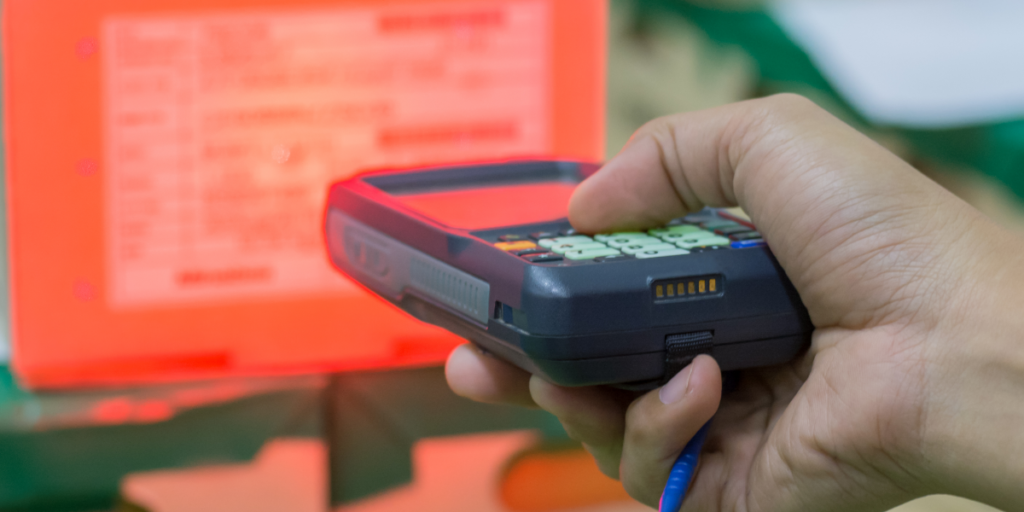Though RFID technology offers enormous benefits, unsecured RFID readers allow infiltrators to bypass cybersecurity safeguards and compromise data privacy. The situation necessitates a highly innovative approach, such as incorporating a secure PKI certificate into RFID readers and making a device hack-proof.
Digital communications and transactions increase exponentially due to their benefits in today’s technologically advanced world. However, it can have disastrous consequences if unauthorized users access confidential data. It could lead to massive financial losses and seriously affect an organization’s reputation. This article examines these aspects closely and explains how a highly secure PKI certificate inserted into Radio Frequency Identification (RFID) readers can make some of the most secure digital authentication devices and make it possible for them to be managed with WeDoIT’s automated certificate management platform.
What Is a Digital Certificate, and How Does It Protect Your Organization?
A digital certificate is a digital password that uses PKI (Public Key Infrastructure) to allow individuals and organizations to access and exchange data over the internet securely. It is also known as an identity certificate or a public key certificate. Since it uses cryptography and a public key to establish the authenticity of the user, device, or server, it ensures that trusted entities alone can connect to an organization’s network.
Here is how a digital certificate protects your organization:
- Authentication – A digital certificate allows users to be sure that the entity they communicate with is genuine, ensuring the communication reaches the intended recipients alone.
- Security – Digital certificates protect data integrity by keeping internal and external communications confidential. Besides, they provide access control whereby only the intended recipients can access or receive data.
- Encryption – Digital certificates encrypt communication between the user and the website, device, or server to ensure complete security.
- Trust – Since digital certificates provide third-party validation of users, devices, or servers, they offer an additional protective layer for your digital assets. Thus, they enhance the trust factor.
However, not all digital certificates are foolproof and have potential vulnerabilities that malicious actors could exploit. Wherever RFID-based access is used in a digital device, incorporating a highly secure PKI certificate into the RFID readers makes it the most secure digital authentication device that can be managed with WeDoIT’s automated certificate management platform.
Understanding Identification, Authentication, and Authorization
Digital certificates secure the system by ensuring proper identification, authentication, and authorization of the user, device, server, or website. Each of the three terms has its significance. The below descriptions help you distinguish between them and understand the concepts better.
- Identification: It is the act of indicating a person or entity’s identity. For example, when you visit your email program to send a message, you enter your email ID.
- Authentication: Authentication is the act of professing the identity. If you take the same example above, the email service asks you to enter your password after your login ID to authenticate your genuineness.
- Authorization: It is the act of specifying access rights to resources, i.e., who can do what. Even after successful authentication using the above two parameters, you can access resources and have privileges only to the extent you are allowed by the administrator or provider.
In other words, identification works along with authentication and authorization. Identification without authentication is useless, and authentication is necessary for authorization. Thus, these three concepts are interlinked and essential for accessing protected data or information systems.
Risks of Unauthorized Access to Information Assets
Even when an information system strictly uses the above parameters for security, vulnerabilities can exist, making unauthorized access to information assets by malicious actors possible. And here are the risks of such infiltration attempts to data and systems.
- Data Breaches and IP Theft: Malicious actors can steal confidential information like customer credentials, organizational data, and intellectual property rights and use them for financial gain or damage the individual/organization’s reputation.
- Operational Disruptions: Unauthorized access can help adversaries disrupt an organization’s regular operations, upload malware such as ransomware, and prevent legitimate users from accessing systems.
- Unauthorized Changes: Threat actors can make unauthorized changes to the system’s functioning, leading to undesirable outcomes due to fraud, business failure, and financial losses.
- Financial and Reputational Losses: Organizations are mandated to maintain data confidentiality, integrity, and availability. They must comply with regulatory stipulations concerning data usage. Loss of data and non-compliance with regulations can lead to financial and reputational losses.
- Audit Nightmare: Data breaches, regulatory non-compliance, and operational disruptions can cause loss of trust, lead to investigation and remediation costs, and have legal consequences, resulting in an auditing nightmare for organizations.
Here are a few examples of how systems can be at risk due to unauthorized access:


- Electric Vehicles Could be Compromised – When you insert the plug of your EV at a public charging station, malicious actors could steal confidential information about your car, your ID, and credit card details using any vulnerability of the station’s system. Besides, they can access and meddle with your car’s internal software. Charging stations are connected to electricity grids. It means when adversaries have control of many vehicles at a time, they could even bring down the power supply at will.


- Disaster Could Result from Unsecured RFID Implementation – Asset tracking relies on RFID, and unsecured RFID tags can lead to unauthorized individuals accessing sensitive information. It could lead to inventory loss, make backend systems vulnerable to cyberattacks, incur high costs in transportation, and cause loss of time and trust, affecting the business workflow. Improper RFID implementation in the healthcare sector can compromise users’ health information and even put patients’ lives at risk.


Therefore, the solution is to ensure proper identification, authentication, and authorization of users, devices, systems, applications, and websites. Digital devices can be incorporated with a secure element to create a highly secure PKI certificate on their readers, making online communication safe.
EC Announces New Delegated Act Under RED (Radio Equipment Directive)
The European Commission has announced a new delegated act (Article 3(3) of RED (Radio Equipment Directive)) to be followed by manufacturers and distributors in the European Union regarding their wireless products. It will apply to all wireless devices that can communicate independently or with the help of other devices. The act aims to enhance the cybersecurity of wireless products to protect privacy, prevent infiltration into confidential information, and eliminate fraud.
By raising the levels of security, the act will help device producers increase customer trust in them. The Commission also has plans to develop specialized harmonized regulations based on the act. Technologies like secure PKI certificates integrated with RFID readers can help business establishments in various sectors comply with such regulations easily, as every aspect of cybersecurity is becoming increasingly mandatory instead of being a choice.
How a Next-Gen PKI Security Solution Is Changing the World of Cybersecurity
PKI and RFID—are two acronyms that are music to any cybersecurity professional’s ears. Combining the benefits of the RFID reader and a secure PKI certificate can raise an information system’s security to a significantly high level. Here’s how the next-gen PKI security solution can change the way digital devices communicate by using the most secure digital authentication methods:
- Automating the Digital Certificate Lifecycle: Automating the digital certificate lifecycle helps avoid misconfigurations and unexpected certificate-related cybersecurity issues, enhances security, and improves efficiency by reducing manual tasks. The ability to rapidly replace certificates when needed is a vital step in achieving crypto-agility.
- Automation of Digital Certificate Management: The automation process involves issuing the certificate, provisioning it to a user or device, identifying other certificates in use, maintaining a centralized inventory, monitoring its functioning, renewing a certificate before it expires, and revoking it when it is no longer needed or compromised.
- Real-Time Encryption: It helps encrypt data in real time, enabling trustworthy online communication. The next-gen PKI security solution enables two or more parties to exchange information securely in real-time without worrying about third-party eavesdropping on their interactions.
- Industry Versatility: This solution is a complete RFID package that is secure, powerful, universal, flexible, reliable, and future-proof, making it one of the most versatile cybersecurity solutions for identification, authentication, and authorization. Thus, it ensures data confidentiality, integrity, and availability to authorized users.
Final Words
Unauthorized access to network systems and devices can immensely help malicious actors compromise customer credentials and cause financial and reputational losses to organizations. With the increasing use of RFIDs in almost every industry, such as logistics, EV charging, hospitality, and healthcare, adversaries have ample opportunities to easily target even sophisticated systems in the absence of a fully secure digital certificate. The way out of the disaster is to fortify the RFID systems by injecting a security element into their digital certificates, resulting in a highly secure PKI certificate to ensure the safest communication in digital devices. This solution is poised to revolutionize the industry as a significant milestone in the cybersecurity landscape. WeDoIT’s automated certificate management platform can help manage these secure digital authentication devices efficiently and help your organization significantly elevate its security posture.
References
- Gündüz, B. (2023, November 3). RFID Systems – We mean what we say. Exactly what you need. ELATEC. https://www.elatec-rfid.com/int/about-elatec
- Ziegler, B. (2023, February 14). Could Electric Vehicles Be Hacked? The Wall Street Journal. https://www.wsj.com/articles/could-electric-vehicles-be-hacked-71a543e3
- Cooper, M. (2018, May 14). PKI Explained: Why It Is Necessary and Relevant Now More Than Ever. ISACA. https://www.isaca.org/resources/news-and-trends/industry-news/2018/pki-explained-why-it-is-necessary-and-relevant-now-more-than-ever
- Loyal, S. (2016, March 2). How to Avoid the 12 Common Pitfalls of RFID for Asset Tracking. ISA. https://blog.isa.org/avoid-common-pitfalls-rfid-industrial-asset-management-tracking
































